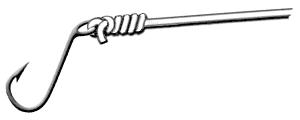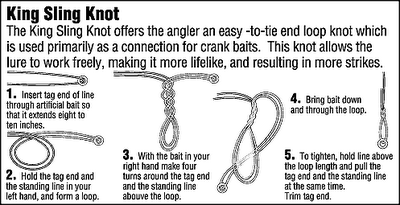Wednesday, November 18, 2015
Sunday, October 15, 2006
Fishing For Carp
 I found this info on anglernet.co.uk/
I found this info on anglernet.co.uk/
A Beginner's Guide To Carp FishingPart One
For a while now, the editor has been asking me to do an article to help newcomers into carp fishing. I’ve thought about it a great deal over recent months but, to be honest, it’s such a minefield and there so much to cover that there’s no way you could cover it all in one piece. As such, I have decided to break it down into the following five parts; What makes a successful carp angler? Watercraft, Bait, Approaches & Techniques, and Application examples.
In this first piece I’m going to give a brief overview of what the series will cover and hopefully dispel a few myths surrounding this great sport of ours, and with a bit of luck, this and future parts in the series will help you put a few more fish on the bank.
What makes a successful carp angler?
The first thing to make clear from the start is that there is no wonder bait that will entice every fish in the lake, no individual method that works every time out, and no individual set-up that will catch every time you cast it in. All this despite what many companies will have you believe from their advertising blurb! There is no one thing that will make you catch every time you go fishing. The key to successful carp angling is about getting lots of little things right; do *that* on a regular basis and you are well on your way to becoming a decent carp angler.
It’s about getting lots of little things right!
We receive an endless stream of emails at Anglers’ Net from people new to carp fishing who have gone out and bought some nice rods, buzzers and a big bag of boilies but can’t understand why they still don’t catch when they turn up at a water and chuck out a bait. In simple terms, a nice pair of rods and some expensive bait does not make a carp angler, it takes a long time to learn all the important skills and even when you get all that right, you can still blank. I’ve been carp fishing for more years than I care to remember, but I still don’t catch every time out!
So where do you start? Well for me the most important aspect of carp fishing is watercraft; you can have the best bait and tackle in the world but if you are fishing in the wrong place, well, you may as well be in the pub! The real problem is that watercraft is the hardest part to get right. Most successful carp anglers have served their apprenticeship fishing for many different species over a number of years. I myself have fished for most species since I was a kid and the knowledge gained is invaluable. To me, watercraft is now second nature, something I take for granted, but it’s something you never stop learning. Each session I fish I add to it a little bit more, you’re basically storing experiences, and then drawing on the information in the future when faced with known or like for like situations.
It sounds daft, but when you are out on the bank fishing, your main focus should be to ‘think like the fish’ you are trying to catch. By building up a picture of its underwater habitat you are able to make certain assumptions (based on experience) which will help you to narrow down likely spots where they will be hanging out at certain times and the routes they are likely to use to get to these spots.
‘Think like a fish!’ If you were a carp, where would you be?
To those assumptions you then need to add the effects of current conditions; sun, rain, wind and temperature all play their part. Then you need to consider the effects of current and recent angling pressure, time of year, time of day, predicted conditions, and anything else that could have an effect on how the fish behave during your time on the bank. All in all then, not an easy task, but when broken down into lots of little pieces the job becomes much easier and the more you do it the easier it becomes. I’ll cover all these areas in the next article.
Once you’re at one with your surroundings and you’ve worked out where you think they’ll be, what’s next - how do you go after these wily creatures that seem to spend most of their time rejecting the bait you place in front of them? Well, you need to work out what the right bait is for that particular session or that particular moment. Now, this may come as something of a shock to some, but do trust me on this; a bag of boilies is not the be all and end all when it comes to catching carp! Of course a ‘good’ boilie is an effective bait, but only when the situation suits. There are a whole range of other baits out there, just as effective, and in many cases more effective. There is immense tunnel vision when it comes to bait and many refuse to use anything other than the current ‘boilie of the moment’. Their choice I suppose but believe me, they are missing out!
There’s more to successful carp fishing than boilies alone!
Meats, nuts, maize, corn, beans, bread, maggots, worms… the list is endless. When used at the right time any of the above will score just as well as a boilie. Don’t get me wrong, I’m not ‘anti’ boilie, far from it, but it’s very important to understand that a boilie is just part of the successful carp anglers’ armoury when it comes to bait. Grasp that fact, and you’ll be half way to catching more fish than most of those around you.
Of course hookbaits are only half the story, do you fish over a bed of boilies, hemp, particles, pellets, or just chuck it out on its own? Again there’s no one simple answer, but through experience, when faced with the same situations you begin to slot the pieces of the jigsaw into place and the correct strategy begins to show itself. Bait and baiting up will be covered in the third part of the series.
So, the swim has been picked, the bait has been placed and you’re waiting for action, but how long are you supposed to wait? Do you sit it out for an hour, two hours or even a day? How long do you wait before checking your bait and recasting? Should you pile in some more for good measure or perhaps refrain until something develops?
The correct approach is key, not just in terms of how you set out your stall when you arrive at a water, but how you develop the plan as the session unfolds. Do you stick with the plan or change and adapt it as you go on? What’s important to remember here is that a successful carp angler should always have a strategy - a plan of action that dictates how you are going to attempt the session ahead. That way you can see if you were successful or unsuccessful. If you were successful, how so? Try and pull out the salient points that made the session a success so that when you are faced with similar situations in the future you can repeat the strategy and hopefully bag a few fish. In exactly the same way, when failure presents itself, which it will, think about how it came about. Were there any key times during the session when you could have changed your methods or approach? That way, on future sessions when things aren’t going to plan and you are in a like for like situation, you can try and effect a change and hopefully pull one out of the bag. However, the key is not to see a blank as a failure; it’s just more experience gained in the pursuit of your quarry - As long as you are able to learn from it, that is!
Plan your approach and remember to refine and adapt as the session unfolds.
Strategy in place, what approach do you go for? Do you bivvy up and sit it out behind buzzers, go stalking, fish off the top? Again it’s important to be open minded about what constitutes an effective method. There is so much blinkeredness when it comes to carp fishing that at times I don’t know whether to laugh or cry. The point I’m trying to make is that you need to decide what kind of carp angler you want to be? A thinking angler that rules out nothing and considers everything, or the average muppet who follows the crowd, believes all the hype, catches very little and blames everything for the blanks bar their own angling inability!
An easy decision you’d think, but alas, no. There are so many out there that truly believe the only way to catch carp is to sit it out in a bivvy behind idle buzzers for days on end. I’m not saying that you should be changing swims every two minutes and trying every possible method each session, however, if you want the rewards, then you sometimes have to get off your backside and make it happen!
That does not mean you have to think about carp and nothing else. There are those who like to pleasure fish for other coarse species as their main style of angling but who also like to chuck out a second rod for carp on the side. That’s fine, and by reading the articles to come I’m sure there will be much that can improve your results whilst trying for carp on the side. The point I’m making is that if you want to catch decent carp and you want to catch them consistently, then it takes a lot of hard work and effort. There are always times when luck plays a part but more often than not you make your own luck and it’s no different in carp angling. So, in the fourth part of the series I’ll cover all the essentials to enable you to plan your strategy and put in into effect.
To catch big carp consistently takes a lot of effort, but stick at it and the results will come.
It’s quite easy to talk about it all; the right approach, the right bait and tactics, but you also need to be able to apply the lessons learnt in the real world. The best laid plans don’t always work instantly; it can sometimes take a whole session before things start to come around, sometimes several sessions, even a whole season! However, if you keep working away methodically the results will come. The problem for most new carp anglers I speak to on the bank is that they expect action immediately, they follow the exact same method as explained in a book or magazine and when the results don’t come quickly they assume they are doing it wrong. In many cases fishing for carp is a waiting game, they key is in being able to determine at which point further action is required on your part. It’s all too easy to keep chucking bait in and re-casting rods but what you need to remember is that every water is different, what works well on one water may have the opposite effect on another. As such, in the final part I will look at some examples of how the above skills and techniques were actually implemented on various different types of waters to bring about a result, highlighting the key points and decisions that were made during each session and the results these decisions brought about.
Hopefully, once you have read the full series you will then be able to take something from it, apply it to your own fishing and bring about a change in results. If before the next piece is published you would like some advice on a particular problem, just drop me an email and I’ll see if I can help.
Until the next piece, tight lines…
Julian Grattidge
Thursday, October 05, 2006
Fishing For Hybrid Bass

Striped bass hybrids are hatchery produced by crossing female striped bass with male white bass. Although both male and female hybrids attain sexual maturity, natural reproduction has not been observed. It has been reported they do go through the spawning activity as their parents do, without producing the offspring.
Habitat - Hybrid Striped Bass mirror the habits and prefer areas within lakes and streams to striped bass and white bass, typically traveling in large schools in open water. In the Spring, schools are smaller and the road trip is on, as they head for the spawning grounds. Hybrids start to get a little more active as the water temp rises; live bait seems to be the best from the banks, although trolling with a white or mirror crankbaits in 12 to 15 ft water produces a good catch. As June and July rolls around, it's slabbing time, look for them off deep creek channels on the slopes. Live bait is at its peak. We have boated thousands! During those Hot Summer days, hybrids seem to hug the bottom in deep water, depending on the oxygen content of the lake. Working the slab very slow in deep water around shad seems to the best, at this time the downriggers shine also, using 3 or 4 inch Sassy ShadThen comes the fall! By this time the schools have become very large, and the feed is on for the winter. Early morning and evenings you can find Hybrids on top, running through weary schools of shad, like a freight train through a small town. When winter comes the hybrid seem to turn into loners, hugging the bottom up to depths of 65 feet. They are catchable, but be careful if you plan to catch and release as they get the bends as you bring them up from that depth! The best result is to let the fish play and several depths before bringing them to the boat.
Natural Food Sources - Shad, minnows, crustaceans and insects.
Fish Facts - Hybrids are a valuable part of fishing: they grow fast, fight hard and take the sport fishing to another level! They fit perfectly into the ecological system, especially in lakes with large shad populations but with little suitable habitat for striped bass and white bass.As a sport fish, hybrids are probably best known for their rapid growth and fighting ability. They can attain weights of six to seven pounds by three years of age and 18 to 20 pounds by eight to nine years of age.
Wednesday, October 04, 2006
Tuesday, October 03, 2006
Fishing For Striped Bass
 Other Names striper, rockfish, rock, line sides
Other Names striper, rockfish, rock, line sidesStriped bass have silvery sides with seven or eight dark horizontal stripes that are not broken. The stripes extend all the way to the tail. The body is more elongated than that of the White Bass, and there are two patches of the on the tongue, rather than one. The striped bass is also a saltwater native that was inadvertently trapped in a freshwater reservoir in South Carolina years ago. Learning that stripers could flourish in fresh water, biologists began stocking them in other impoundments. Striped bass are more temperature sensitive and fishing is usually best for them in winter, spring and early summer. Drifting live bait, trolling deep-running lures or fishing vertically are the most common fishing methods. Also called rock fish or stripers.
 The best striper fishing occurs from fall through spring, when fish are actively feeding. Live shad are very effective, particularly below Jim Woodruff Dam on the Apalachicola River. Stripers may weigh up to 60 pounds; use heavy tackle with 3- to 4-oz. weights in high flow areas. Live menhaden, golden shiners, croakers or eels are good choices as bait for Saltwater Stripers. Lures, like rattletraps, that resemble baitfish also produce impressive strikes, including heavy jigs, as well as sinking and floating lures in white, chrome or chartreuse.
The best striper fishing occurs from fall through spring, when fish are actively feeding. Live shad are very effective, particularly below Jim Woodruff Dam on the Apalachicola River. Stripers may weigh up to 60 pounds; use heavy tackle with 3- to 4-oz. weights in high flow areas. Live menhaden, golden shiners, croakers or eels are good choices as bait for Saltwater Stripers. Lures, like rattletraps, that resemble baitfish also produce impressive strikes, including heavy jigs, as well as sinking and floating lures in white, chrome or chartreuse.
The Striper has been widely introduced in numerous lakes, rivers and impoundments. Stripers prefer relatively clear water with a good supply of open-water baitfish. Their preferred water temperature range is 65 to 70 degrees.
Description: The striper is the largest member of the temperate bass family. Body coloration is olive-green to blue-gray on the back with silvery to brassy sides and white on the belly. It is easily recognized by the seven or eight prominent black uninterrupted horizontal stripes along the sides. The stripes are often interrupted or broken and are usually absent on young fish of less than six inches. The striper is longer and sleeker and has a larger head than its close and similar looking relative, the white bass, which rarely exceeds three pounds.
Spawning Habits: The Striper Spawns in March, April and May when water temperatures reach 60 to 68 degrees. Stripers are river spawners that broadcast millions of eggs in the water currents without affording any protection or parental care. During spawning, seven or eight smaller males surround a single, large, female and bump her to swifter currents at the water surface. At ovulation, ripe eggs are discharged and scattered in the water as males release sperm. Fertilized eggs must be carried by river currents until hatching (about 48 hours) to avoid suffocation. Fry and fingerlings spend most of their time in lower rivers and estuaries. Because striped bass eggs must remain suspended in a current until hatching, most Oklahoma impoundments are unsuitable for natural reproduction. Freshwater populations have been maintained by stocking fingerlings, and, despite initial difficulties in hatchery procedures for obtaining females with freely flowing eggs, a modern technique of inducing ovulation with the use of a hormone has been successful.
Feeding Habits: Stripers are voracious feeders and consume any kind of small fish and a variety of invertebrates. Preferred foods for adults mainly consist of gizzard and threadfin shad, golden shiners and minnows. Younger fish prefer to feed on amphipods and mayflies. Very small stripers feed on zooplankton. Like other temperate bass, they move in schools, and all members of the school tend to feed at the same time. Heaviest feeding is in early morning and in evening, but they feed sporadically throughout the day, especially when skies are overcast. Feeding slows when water temperatures drop below 50 degrees but does not stop completely.
Growth: Stripers are fast-growing and long-lived and have reached weights of over 30 pounds in Oklahoma. Sexual maturity occurs at about two years of age for male stripers and at four years of age for females. They can reach a size of 10 to 12 inches the first year.
Fishing For White Bass
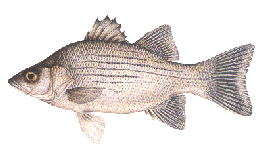
The white bass, also called silver bass, has a stocky body and silvery sides with unbroken black stripes above the lateral line. The stripes below the lateral line or faint and irregular, the stripes usually stop short of the tail. The tongue has a single patch of teeth at the base. Whites usually travel in schools, cruising open water and preying on gizzard shad, their main prey source. They are an excellent sportfish, commonly reaching 1-3 pounds. In April, when water temperatures reach the low 50s, whites will swim up streams and rivers to spawn, and this is a great time to catch
them. Later in the summer, schools of whites will chase shad on the surface, providing great topwater angling. Also called sand bass.
White Bass are found in lake and rivers. In the same family as stripers, white bass seldom exceed four pounds, with one- to two-pound fish more common. The best white bass fishing occurs in the spring, when fish move upriver to spawn. Small jigs in white or brown are often productive. Small crayfish or grass shrimp on #4 hooks fished in deep river bends or at the edge of sand bars are effective baits. Put a 1/4 oz. egg sinker above your swivel, with an 8- to 12-inch leader tied to your hook; use lighter line for the leader, so if you get snagged you don't have to replace the complete rig.
Fishing For SmallMouth Bass
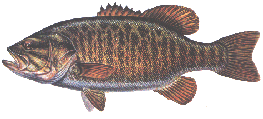
The smallmouth prefers clear water and rocky structure. They are generally found in deeper water than largemouth's. While less common than the largemouth, the smallmouth is a fantastic sportfish that fights hard, exhibiting spectacular aerial displays. Beautiful brown to olive green markings and an upper jaw that does not extend beyond the eye distinguish the smallmouth.
Friday, September 22, 2006
Fishing For Largemouth Bass

Micropterus salmoidesThe Official State of Florida Freshwater Fish is the Largemouth Bass species called Micropterus salmoides floridanus.
The species known as Black Bass include two of the most sought after sporting fish in North America….The Smallmouth and the Largemouth Bass.
The Largemouth got its name because its upper jaw extends to behind its eye. Its coloring ranges from a dark or black back to green or olive-colored sides to a light belly. It has an uneven line of dark spots or bars that extend along its flanks to its tail. The spiny first dorsal fin is highest midway along its length and almost separated (forming a notch) from its soft second dorsal.
Largemouth Bass range from Minnesota to Quebec and south to the Gulf of Mexico. Originally a species of the southeastern US, it has been widely introduced elsewhere.
The northern largemouth seldom exceeds 10 pounds but the southern largemouth can exceed 20 pounds in weight. The IGFA all tackle record is 22 pounds 4 ounces caught in Georgia. Florida’s certified state record is 17.27 pounds.
Black Bass are the most sought after freshwater fish because of their wide range and their aggressive bone jarring strikes and the strength they exhibit during the fight. Being active predators they feed on a large variety of creatures and can be tempted to strike at practically any kind of bait or lure, either natural or artificial. Artificials could include plastic worms and grubs, spoons, spinners, crank baits and plugs. For bait fishing you could use worms, crayfish, leeches or minnows. The fly fisherman could use a variety of artificials such as bugs, streamers, poppers and bucktails.
Tackle for fishing with lures could include a 5-1/2’ to 7 ‘ spinning or baitcasting rod and reel with 6 to 12 pound monofilament. Fly fishing tackle could include a 7’ to 9’ bass fly rod with fast taper fitted with a fly reel fitted with a #7 to #9 floating line and a 6 to 8 pound leader.
Care Of Fishing Rod Guides
The guides on your rods must be checked and kept free of any abrasive areas. Pull a strip of pantyhose through the rod guides to check for snags, or a cotton tipped swab. Saltwater will wreak havoc with roller guides. Inspect them before and after each trip. When trolling, make sure the line is not wrapped around a guide. Pay close attention to you rod guides, they are very important, and if they get damaged or abrased you must replace it or it will break your line!
Fishing Tips
Tip: Monofilament can be damaged by excess exposure to direct sunlight. Keep your equipment in a dry, shaded area. Fishing on a hot summer day is fine. Keeping your rods in a hot car trunk, or exposed to direct sunlight in the back seat, is not recommended.
Tip: Always use a well balanced outfit. This means the rod, reel, line and lure should be made for each other. Do not load a light outfit with a heavy line. Conversely, do not throw a huge lure with a light outfit.
Tip: More rods are broken in car doors, house doors or through poor storage. Do not let rod tips bang all over your boat.
Tip: Always rinse rods with freshwater. Periodically remove reels and lubricate reel seats with CRC-6-56.
Tip: Remember, proper maintenance, balance, storage and handling are imperative in taking care of the equipment that takes care of you.
Tip: Store all bulk line in a cool, dark place. Direct sunlight will damage monofilament over a period of time.
Protecting Your Fishing Line
Considering the expectations of monofilament fishing line, and the abuse it's subject to, it is amazing what this "thin" material will do. But, to get the most out of any monofilament, we must protect it from certain negative elements. Listed below are a few "mono checks" that, when followed properly, will put more fish on the table. We will start with the reel and work towards the hook.
Putting Monofilament Line On Your Fishing Reel
Most tackle stores are happy to spool up your reel, particularly those who have a line winding machine. If you have the time, and they have the quality line you want, let them do it. When you're spooling up a bait casting reel, or any conventional reel, put a rod, or even a pencil, through the center of the line spool. Tie the line to the reel with a (Uni-knot or Arbor knot) clipping off the tag end. Snug the knot to the reel spool. One person should reel while another holds both ends of the rod, applying pressure as the line is reeled onto the spool. Fill to about an 1/8 inch from the spool's outer rim. Keep the line away from anything that could cause abrasion. Use the same procedure with a spinning reel, but reel line so that it comes off the end of the spool. After 15 or 20 turns, if a twist occurs, turn the spool over and continue to fill the reel. Monofilament will twist. If it happens while fishing from a boat, play the line out with nothing on the end, trolling behind the boat for about five minutes. It is also important to always use a ball-bearing swivel, which will reduce or eliminate line twist. Certain lures or bait tied directly to the line will invite twist. To compensate for this, try lighter line. Just for your own education and enjoyment, go down in line test. You will be surprised that you can catch big fish on line much lighter than you are presently using. It may take more patience and even a little more skill, but you will enjoy it. If fish stop biting, go to a lighter test. The thinner line may get them eating again. The thinner the line, the less likely a fish sees it.
Setting The Drag On Your Fishing Reel
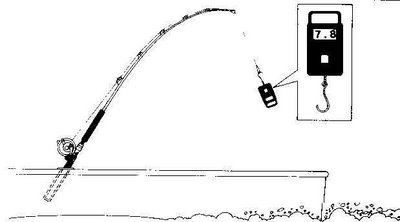
Set the strike drag with the rod securely in a holder. The scale should read between 25 and 33 percent of the unknotted line strength when the drag starts to slip. 30-lb test line (shown above) should have a strike drag setting of between 7.5 and 10 pounds. 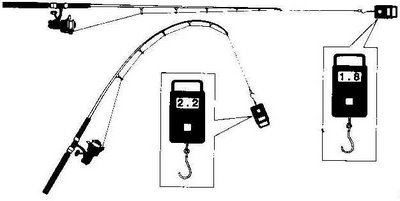
If you set the drag on a light-tackle outfit (12-pound test is illustrated above) with the rod tip pointed at the scale (top image), the reading should be about 15 percent of the unknotted line strength. When the rod is in the fighting position (bottom) friction will increase the drag.
Setting the Drag on a Lever Drag Fishing Reel
Properly setting the drag on a fishing reel is one of the most important things you can do to insure landing that fish of a lifetime.
On lever drag reels there are two drag settings we need to concern ourselves with, strike drag and full drag. The strike drag setting needs to be high enough to prevent backlash on the reel and below the point where the initial strike force or inertia exceeds the breaking strength of the line.
To properly set the strike drag, the conditions of the real fish strike should be simulated as closely as possible. There have been many discussions on the proper setting of strike drag on a fishing reel. For our discussion we will assume it should be somewhere in the range of 25% to 35% of the rated line breaking strength. (I.e., 30# line should have a strike drag setting in the range of 7-1/2 pounds to 10-1/2 pounds.)
The reel should be filled with fresh line within 1/8" of the shoulder of the spool flange. It shall be mounted on the rod it is to be used with and have the line running through the guides. The rod should be placed in a rod holder or held at a 45-degree angle. You will need a scale of the type that records the highest tension achieved, such as a Manley or Chatillion brass tube scale. Let out enough line so that any leaders, swivels or knots are beyond the guides and attach the scale to your line. Check to see the telltale marker on the scale is set to 0 pounds.
Pull down and away from the rod as quickly as you can to simulate the action of a striking fish.
Read the scale and adjust the drag on the reel according to the manufacturer’s directions. Reset the scale and re-test using the same technique to check the new setting. Continue this process until the desired setting (25% to 35% of rated line breaking strength) is reached.
Full drag will be set in the same manner as the strike drag was described
The full drag setting on the reel is usually set at no more the 50% of rated line breaking strength. (I.e., 30# line should have a full drag setting in the range of 15 pounds.)
Full drag should only be used to put additional pressure on a tired or mostly subdued fish. If you do use the full drag position and the fish suddenly decides to make a run quickly return the drag to the strike position to prevent a break off.
Removing Gut Hooks From A Fish

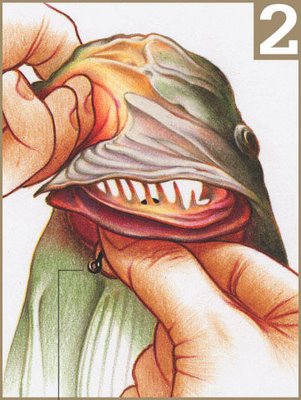
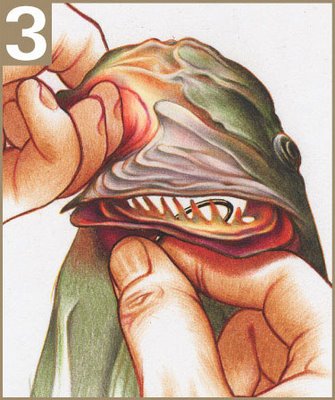

 This is a great thing to know. I found this info on infisherman a very informative fishing site.
This is a great thing to know. I found this info on infisherman a very informative fishing site.Fishing Hook Removal
Removing a hook embedded over the barb, but not back out through the skin, is relatively easy:
1. Make a loop about 10cm (6") long, in strong line, 10kg (20lb) plus, and pass it over the eye of the hook, and then up to the top of the bend of the hook.

2. Push firmly down on the eye of the hook so the eye of the
hook touches the skin.
3. FinallyWith a sudden, strong yank on the line loop, pull up and away from the hook-eye. The hook should come out the way it went in, and because it will curve out the same way it went in the barb should not catch.
ImportantIt is very important to follow 'Step 1' to the letter if pain and discomfort is to be avoided. Most importantly the loop of line must be at the top of the hook bend, and the pull must be up and away. Way too many articles on this method advise having the line at the back of the bend, and pulling straight back - this will only result in the barb catching and causing pain.
Improved Clinch
Improved Clinch Fishing Knot
Step One
Take the tag end and pass it through the eye of your terminal tackle, allowing at least 3 inches of tag beyond the eye. Wrap the tag end five to seven times around the line going to your rod.
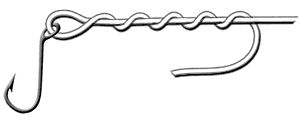
Step Two
Pinch the coils you created with your thumb and forefinger. With your other hand, run the tag end through the first loop above the eye, then over the coils and through the large loop you just created.

Step Three
Always wet the knot area. Grab the tag end and the line going to your rod and pull simultaneously, forcing the coils to form a tight spiral. Once tight, slide the tightened coils against the eye of the terminal tackle with your fingernail and assure the coils are in a uniform spiral, not overlapping each other. Clip the tag end.
